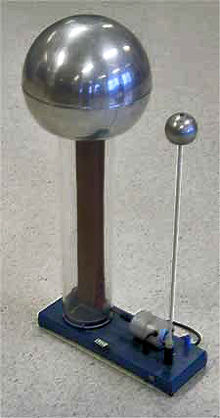Description and Types of Electrostatic Generators
– Electrostatic generators are used in science classrooms to demonstrate electrical forces and high voltage phenomena.
– They are also used for practical applications such as operating X-ray tubes, particle accelerators, and medical applications.
– Examples of electrostatic generators include the Van de Graaff generator, Pelletron, Wimshurst machine, and Holtz machine.
– Different types of generators may use different mechanisms to generate charge.
– Each type of generator has its own advantages and disadvantages.
– Electrostatic generators have a long history dating back to ancient civilizations.
– Practical means of generating electricity by friction were developed in the 17th century.
– Electrostatic machines became fundamental instruments in the study of electricity in the 18th century.
Friction Machines
– The first electrostatic generators were invented around 1663 by Otto von Guericke.
– Friction machines use the triboelectric effect to generate electricity.
– Francis Hauksbee improved the design of frictional machines in 1706.
– Georg Matthias Bose added a collecting conductor to friction machines in 1730.
– Jan Ingenhousz invented electric machines made of plate glass in 1746.
Influence Machines
– Influence machines operate by electrostatic induction.
– Abraham Bennet described a doubler of electricity similar to the electrophorus in 1787.
– Influence machines amplify a small charge by means of repeated induction.
– They were developed from the invention of the electrophorus.
– Used to produce imbalances of electric charge.
Historical Development of Electrostatic Generators
– Various inventors and scientists made significant improvements to the design of electrostatic generators.
– The development of the Leyden Jar, an early form of capacitor, aided experiments with electrostatic machines.
– William Nicholson, Erasmus Darwin, and others made modifications to early influence machines.
– Holtz, Wommelsdorf, and others developed advanced influence machines in the 19th and early 20th centuries.
– James Wimshurst improved the Holtz machine and created the Wimshurst machine in 1878.
– Van de Graaff invented the Van de Graaff generator in 1929 as a particle accelerator.
Other Applications and Related Concepts
– Electrostatic generators have various applications in physics research and fringe science investigations.
– Gridded ion thrusters utilize electrostatic forces to propel spacecraft.
– The EWICON is an electrostatic vaneless ion wind generator developed by TU Delft.
– Electrostatic motors, electrometers, electrets, and static electricity are related concepts.
– Electrostatic precipitators are devices used to remove particulate matter from industrial emissions.
– The Dutch Windwheel utilizes technology developed for the EWICON. Source: https://en.wikipedia.org/wiki/Electrostatic_generator
An electrostatic generator, or electrostatic machine, is an electrical generator that produces static electricity, or electricity at high voltage and low continuous current. The knowledge of static electricity dates back to the earliest civilizations, but for millennia it remained merely an interesting and mystifying phenomenon, without a theory to explain its behavior and often confused with magnetism. By the end of the 17th century, researchers had developed practical means of generating electricity by friction, but the development of electrostatic machines did not begin in earnest until the 18th century, when they became fundamental instruments in the studies about the new science of electricity.


Electrostatic generators operate by using manual (or other) power to transform mechanical work into electric energy, or using electric currents. Manual electrostatic generators develop electrostatic charges of opposite signs rendered to two conductors, using only electric forces, and work by using moving plates, drums, or belts to carry electric charge to a high potential electrode.
